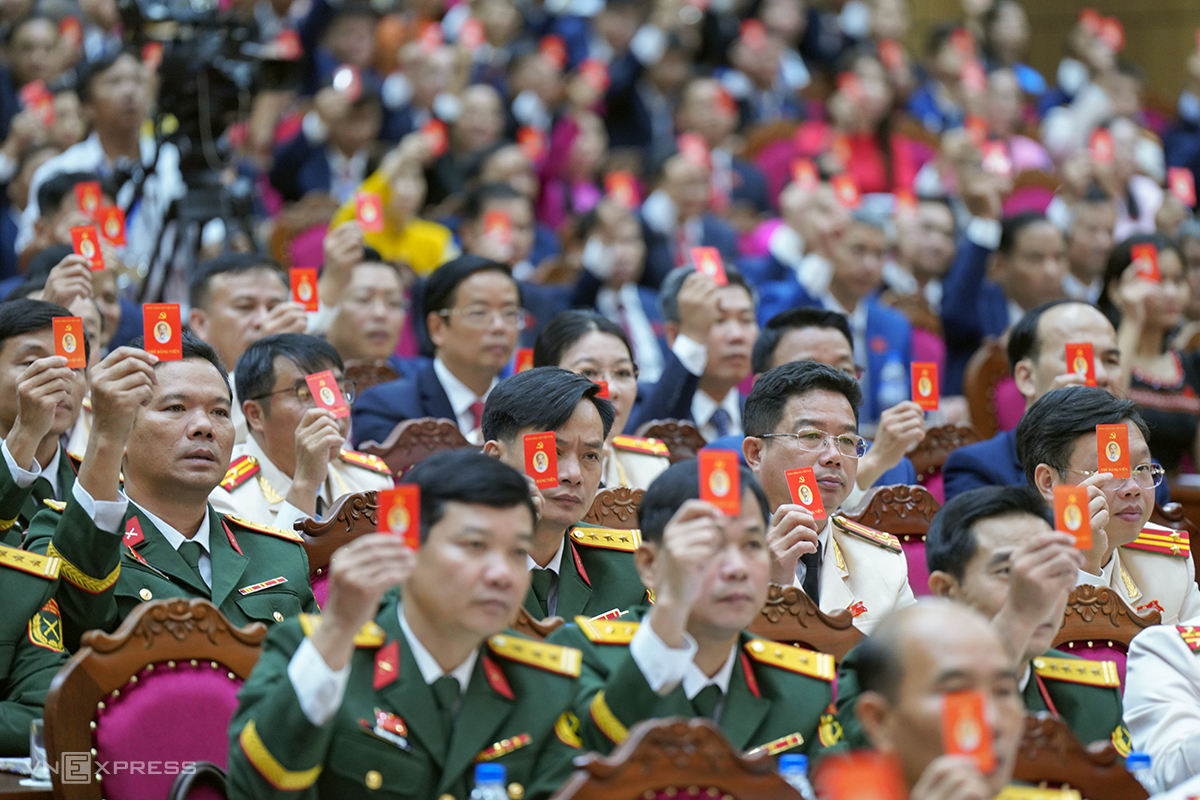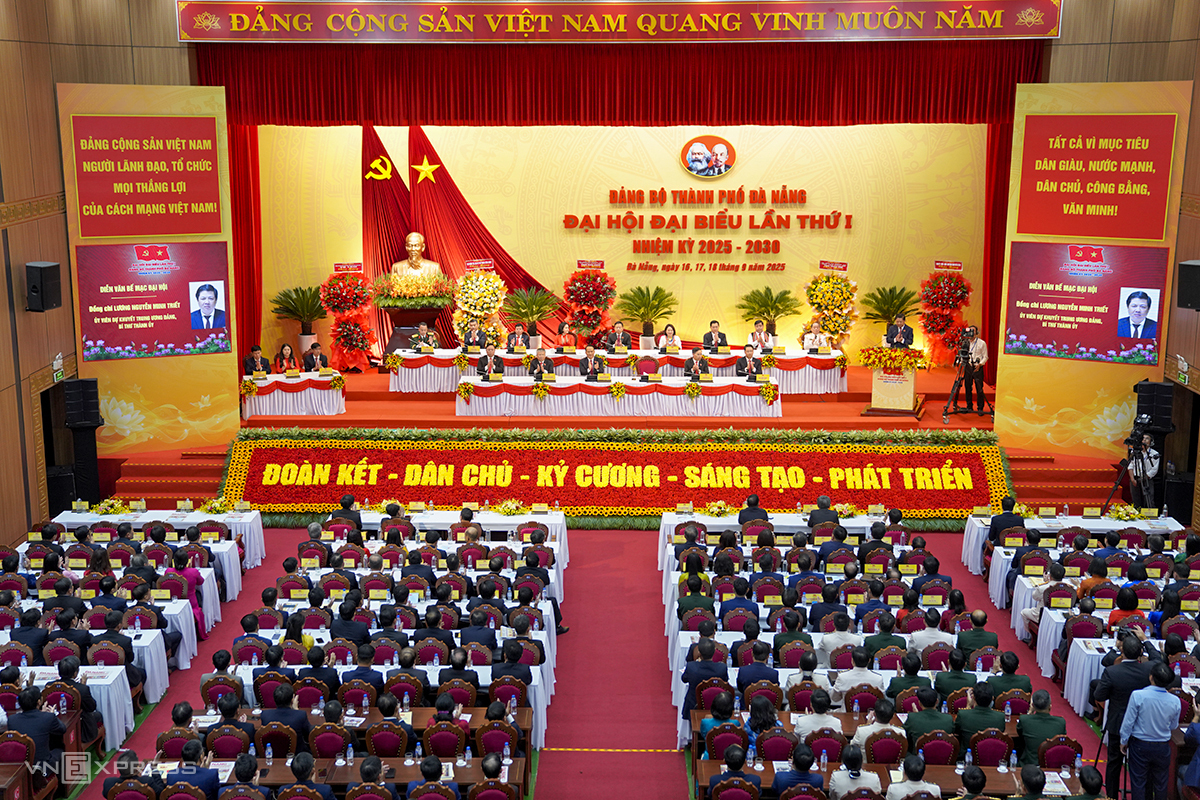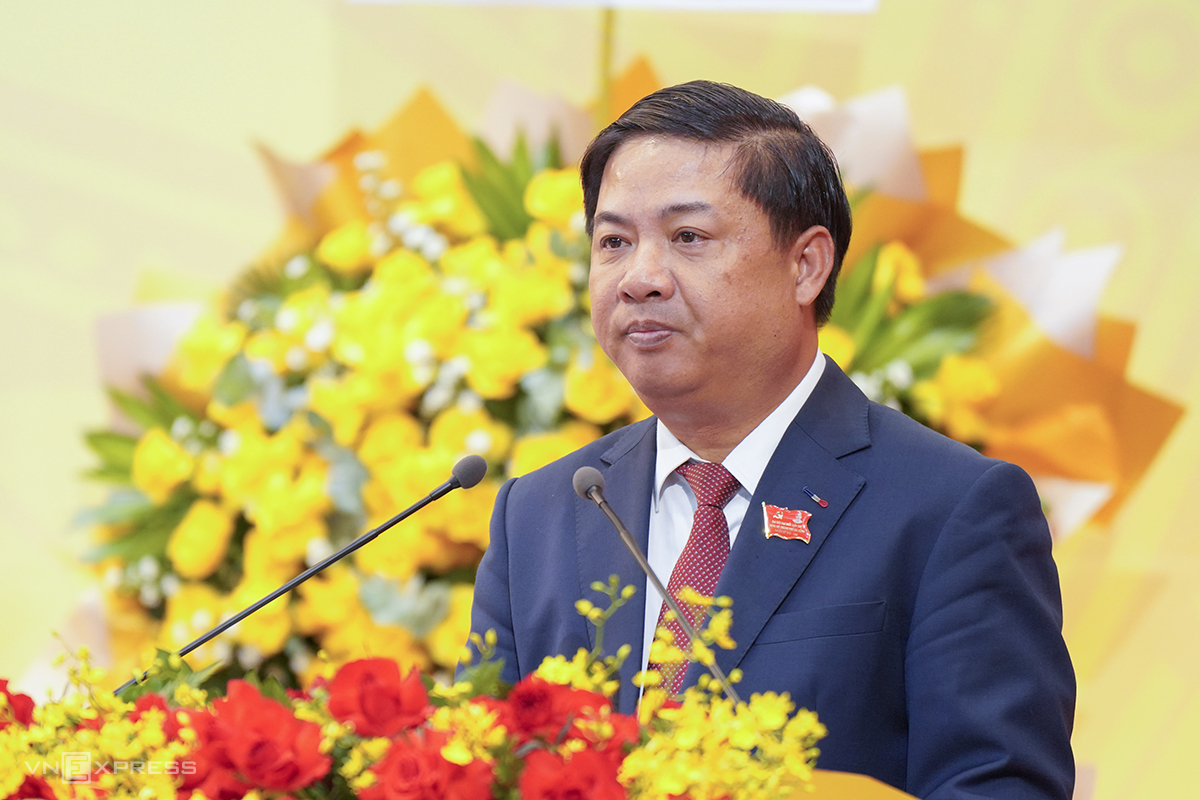According to the Resolution of the Da Nang City Party Congress adopted on 18/9, the city aims for an average annual gross regional domestic product (GRDP) growth rate of 11% during the 2026-2030 period. The target for per capita GRDP is 8,500 USD per year. Development investment capital is projected at over 660,000 trillion VND, increasing by 14-15% annually. The city also strives for the digital economy to account for 35-40% of GRDP, with the private economic sector growing by 11.5-12% and at least 500 innovative start-up businesses.
 |
Delegates vote to approve the Resolution, 18/9. Photo: Nguyen Dong |
Delegates vote to approve the Resolution, 18/9. Photo: Nguyen Dong
To achieve these goals, Da Nang has outlined several key directions, focusing on developing the private economy, mobilizing social resources for infrastructure investment, and promoting new economic models such as the digital economy, green economy, circular economy, night-time economy, and marine economy.
The city plans to develop six spearhead sectors linked to six growth drivers: Developing high-quality tourism and services, combined with world-class resort real estate; preserving and promoting world and national cultural heritage; and developing logistics services linked to synchronous investment in the airport system, seaports, economic zones, and international border gates.
In addition, the city will develop high-tech industries, digital technology, processing and manufacturing, and supporting industries, coupled with accelerating the implementation of eco-industrial parks and researching the Halal industry. The city also aims to develop information technology, electronics, telecommunications, semiconductor industries linked to the digital economy, and the energy and renewable energy industries.
Da Nang will also develop high-tech agriculture, forestry, and deep processing industrial zones for medicinal herbs; develop the marine economy, build modern fishing centers associated with ensuring security and sovereignty over seas and islands; form coastal urban chains, and develop new, green, large-scale, modern, and smart urban areas in the East and develop marine space in Da Nang Bay.
The city will also implement strategic projects in the Chu Lai Open Economic Zone, the Vietnam International Free Trade Zone, and the International Financial Center in Da Nang.
 |
The First Congress of the Da Nang City Party Committee for the 2025-2030 term, taking place from 16 to 18/9. Photo: Nguyen Dong |
The First Congress of the Da Nang City Party Committee for the 2025-2030 term, taking place from 16 to 18/9. Photo: Nguyen Dong
Science and technology, innovation, and digital transformation are identified as key breakthroughs. Da Nang will build a national-scale data center, a semiconductor laboratory, and an innovation start-up center, while promoting international cooperation to attract high-quality human resources in new technology fields.
Alongside economic development, the city aims to improve the quality of life for its residents: the percentage of trained workers with degrees and certificates will reach 37-40%, the Human Development Index (HDI) will reach 0.787, and average life expectancy will be 75.5 years. The multidimensional poverty rate will be reduced to 2.66%, with the urban area at only 0.74%.
By 2045, Da Nang envisions becoming a smart and ecological city, an international financial center, an industrial hub, a logistics center, an innovation and start-up hub, and a top tourist destination in Asia.
Luong Nguyen Minh Triet, Secretary of the Da Nang City Party Committee, stated that the First City Congress for the 2025-2030 term agreed on the goal of building Da Nang into a modern city, rich in identity, with a high quality of life; a major growth pole, and an international center for start-ups, logistics, finance, high technology, and tourism.
 |
Secretary of the Da Nang City Party Committee, Luong Nguyen Minh Triet, speaks at the closing of the Congress. Photo: Nguyen Dong |
Secretary of the Da Nang City Party Committee, Luong Nguyen Minh Triet, speaks at the closing of the Congress. Photo: Nguyen Dong
The city has the necessary conditions to realize this goal thanks to a stable socio-political foundation, a favorable investment environment, increasingly improved infrastructure, quality human resources, and the tradition of unity and creativity of the people of Quang Nam. Mr. Triet called on the entire Party Committee, government, and people to join forces, promote the spirit of self-reliance, aspire to rise, and be determined to successfully implement the Resolution.
"Immediately after the Congress, Party committees, Party organizations, officials, Party members, and the people need to quickly put the Resolution into practice with concrete actions, creating clear changes in all fields," Mr. Triet said.
Previously, the government set a target for per capita GDP by 2030 of approximately 7,500 USD. Da Nang's target is approximately 1,000 USD higher than the national average.
According to the World Bank, per capita GDP is a fundamental measure reflecting the average value of economic output per person, and indirectly reflects per capita income. It is one of the important indicators to assess the standard of living and the level of development of a country or locality.
After merging with Quang Nam on 1/7, Da Nang became the largest city in the country, covering an area of nearly 11,860 km2, with a population of over 3 million. The city has two airports (Da Nang, Chu Lai), three international seaports (Tien Sa, Lien Chieu, Chu Lai), and tourism advantages with My Khe beach, Son Tra peninsula, Ba Na Hills, and two world heritage sites, Hoi An and My Son.
During the 2020-2025 period, the average GRDP growth of the former Da Nang City reached 6.82% per year, while the former Quang Nam province reached 4.6% per year, for a combined average of 5.8% per year. The total state budget revenue of Da Nang City is estimated at 125,949 trillion VND, Quang Nam province at 134,613 trillion VND, for a combined total of 260,562 trillion VND.
Nguyen Dong












